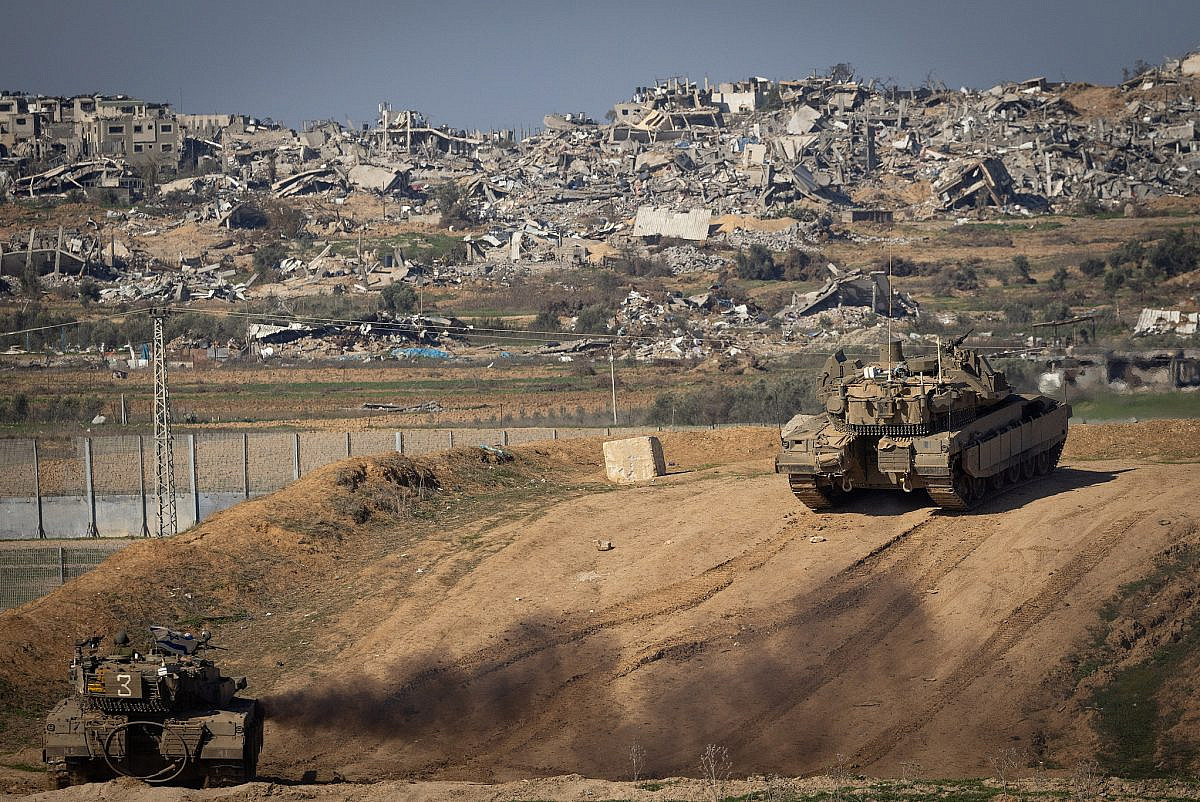With most of the Gaza Strip’s Palestinians now trapped inside the enclave’s southern tip, the Israeli onslaught they had attempted to escape has followed them to Rafah. Some 1.4 million people are pinned against a virtually impermeable Egyptian border, while the entry of life-sustaining aid is chronically stalled. At Karem Abu Salem (Kerem Shalom), the southeastern crossing directly controlled by Israel, Jewish Israelis have been filmed gleefully blocking food convoys from Egypt, in a fitting correlative to the genocidal rhetoric of their leaders.
Where, then, are the Palestinians of Gaza, hungry and homeless, to go?
The question hangs over every massacre in Rafah, where Israel’s attacks have kept pace with those of the past four months. Last week, more than 100 Palestinians perished in a single night of intense strikes that the Israeli military, scrambling to free two hostages, dubbed “diversionary.” The attacks may be a sign of worse to come: the UN’s humanitarian affairs chief, Martin Griffiths, warned of “a slaughter” if Prime Minister Benjamin Netanyahu proceeds with a promised ground assault on Rafah.
Rather than press for a ceasefire, though, the White House has issued toothless calls for Israel to protect Gaza’s civilians, as if the same military that has killed more than 12,000 Palestinian children has any interest in sparing the innocent. Knowing this, some Palestinians have tried to return to the north, but looming famine among the displaced means any safety, however elusive, will soon give way to hunger. UNRWA, the UN agency leading food distribution in Gaza, says the last of its aid convoys to reach the north arrived more than three weeks ago, on Jan. 23.
With food scarce and safe shelter a gamble, hundreds of families in Gaza have been raising money online to cover the “coordination services” of Egyptian middlemen, who charge thousands of dollars to secure passage through the Rafah Crossing. Demand for these exits far exceeds the Egyptian government’s willingness to accommodate them, though, and Palestinians fear that they may soon have no choice but to amass at the border, pleading for refuge in the Sinai desert.
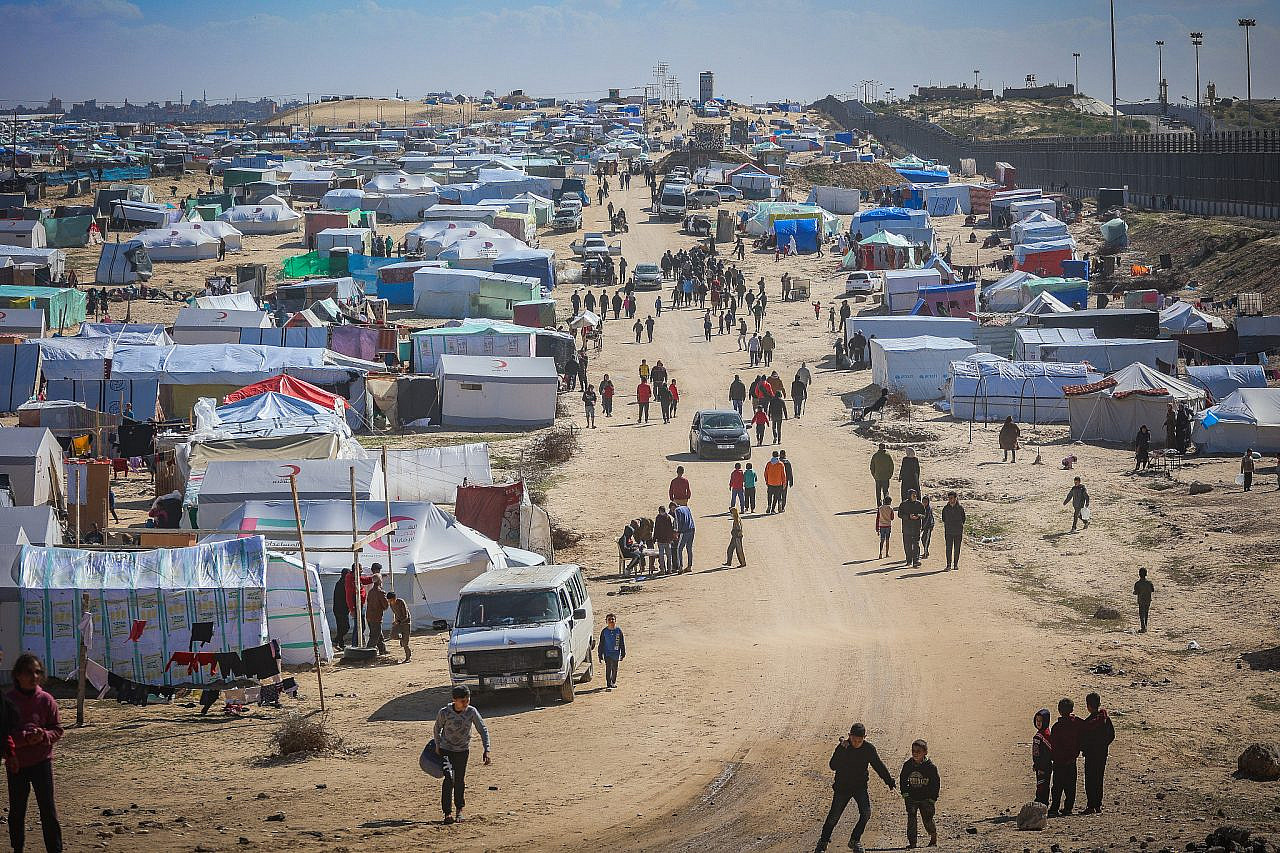
This scenario may be prompting Egypt’s government to prepare for a mass exodus through Rafah, according to a report last week by the Sinai Foundation for Human Rights. The report cites unnamed sources involved in the construction of a “security zone” in eastern Sinai, where seven-meter walls are being erected “with the aim of receiving refugees from Gaza.” Egyptian officials told Ahram Online that the area is a “logistics hub” for aid to be delivered “through the Rafah Border Crossing,” though it was unclear how such a hub would help overcome Israel’s hindering of shipments.
The Sinai Foundation backed up its claims with photos of the construction site, where it says activity began on Feb. 12 — the day Israel launched its fiercest assault so far on Rafah. The Associated Press similarly confirmed these activities through satellite images of the area. Muhannad Sabry, an Egyptian journalist and Sinai expert, told the Sinai Foundation that preparations for the anticipated displacement were taking place “in coordination with Israel and the United States.”
If Israel’s perceived sense of security somehow hinges on emptying Gaza of its people, Netanyahu and his American backers have resisted saying so publicly. Members of Netanyahu’s cabinet, however, have had no such inhibitions.
Indeed, the Israelis have long telegraphed their hopes for a second Palestinian Nakba. As early as October, +972 reported on former Israeli deputy foreign minister Danny Ayalon’s call for establishing “tent cities” in the Sinai, where he saw “a huge expanse, almost endless space.” And just four days into Israel’s assault, U.S. Secretary of State Antony Blinken, when asked about securing “safe passage out of Gaza” for Palestinian civilians, told reporters that the White House was “talking to Egypt about that.”
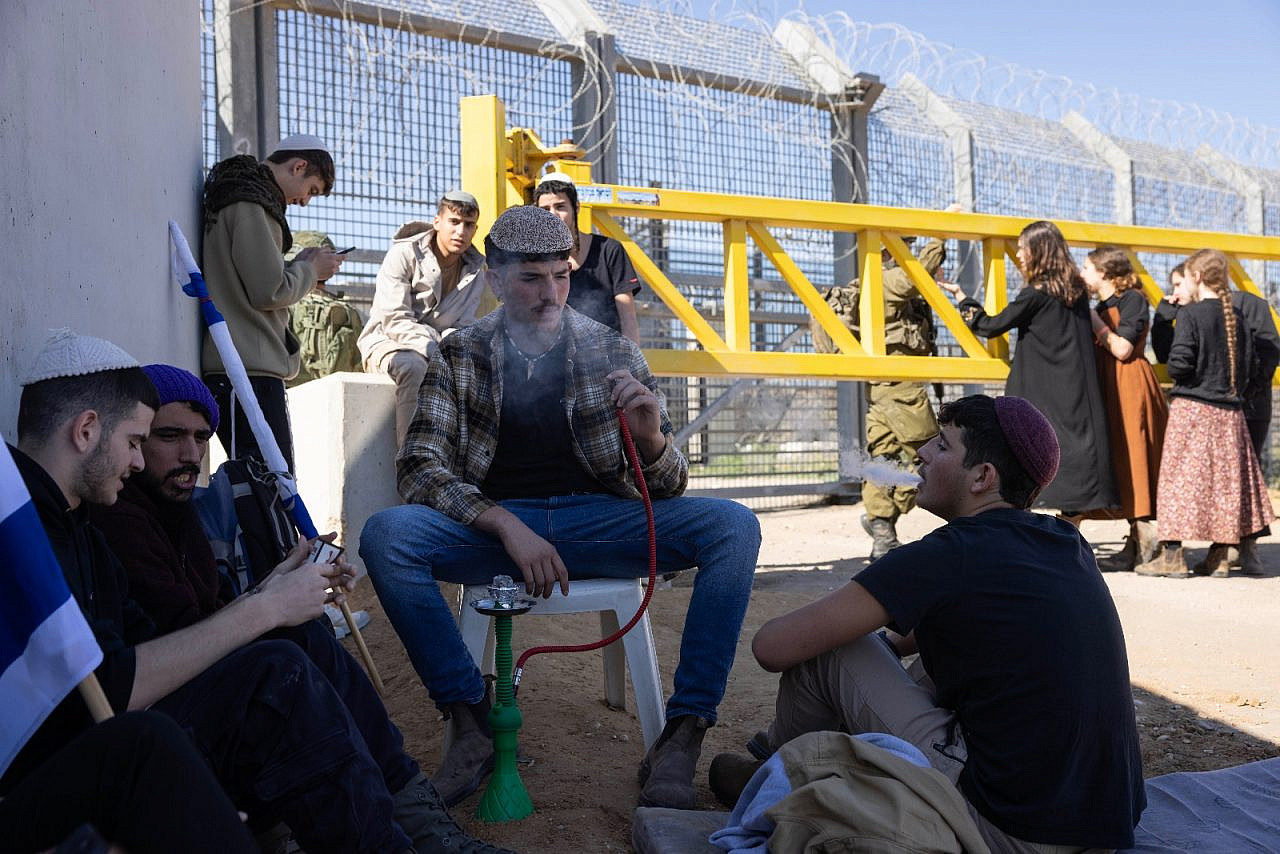
Although Egyptian President Abdel Fattah el-Sisi had repeatedly dismissed the possibility, Cairo-based news outlet Mada Masr — in an October report that it later retracted — cited officials with knowledge of “economic incentives” tied to Egypt’s “acceptance of large inflows of displaced Palestinians.”
The Mada Masr report is no longer available online, but it tracks with more recent statements by Israeli and American officials, who have insisted on redirecting UNRWA funds “to address [the] potential needs of Gazans fleeing to neighboring countries.” That language appeared in an Oct. 20 White House memo that requested supplemental funding to help Israel “reestablish territorial security.”
UNRWA on its knees
Meanwhile, the two governments have been in lockstep over plans to debilitate UNRWA by suspending funds over allegations that a handful of its employees were involved in the October 7 attack; multiple European states have followed suit, despite a lack of serious evidence and the disproportionate nature of the response.
Without the agency — whose areas of operation, in addition to the occupied territories, span Jordan, Lebanon, and Syria — Palestinians in Gaza stand little chance of surviving the current onslaught, much less rebuilding the enclave after it ends.
For four months, Israel has systematically targeted and destroyed not only the institutions of Hamas governance in Gaza, but also much of UNRWA’s presence there. While UNRWA schools and refugee camps were subject to repeated Israeli strikes in 2014’s Operation Protective Edge, the latest assault has taken direct aim at the UNRWA headquarters and denied the agency access to all its facilities north of Wadi Gaza, which divides the enclave roughly in half.
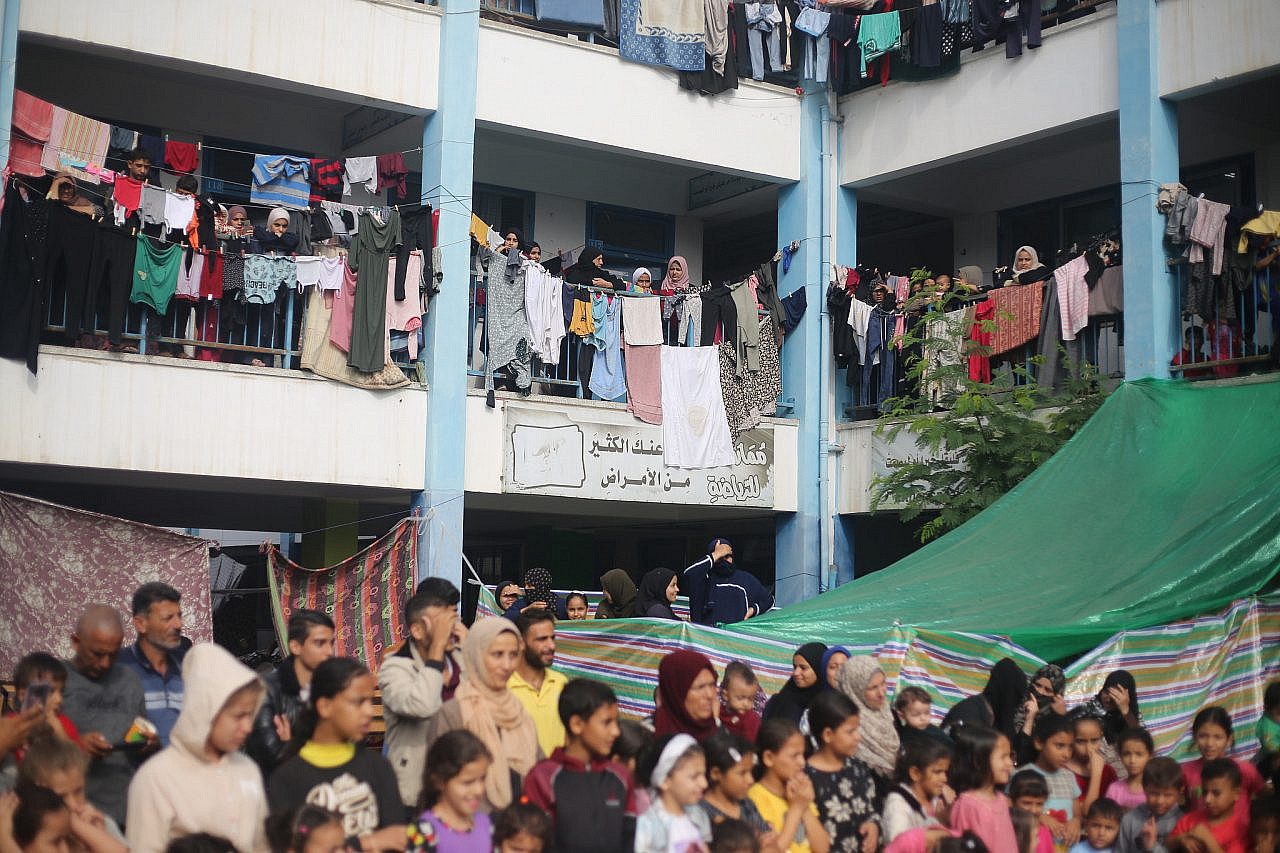
Current and former UNRWA officials who spoke with +972 said there are no precedents for the present situation. Lex Takkenberg, who spent three decades working with UNRWA, most recently as its chief ethics officer, recalled the destruction in the northern West Bank city of Jenin during Israel’s invasion in 2002. That operation — part of what was then the largest Israeli military build-up in the West Bank since the 1967 War — killed scores of Palestinians and leveled much of the UNRWA-administered refugee camp bordering the city.
“It took us more than a year just to remove the unexploded ordinance and rubble,” said Takkenberg, who was briefly responsible for the UNRWA reconstruction effort in Jenin. He estimates that the destroyed area, which he called “ground zero,” was roughly the size of “five to ten football fields.”
By comparison, the destruction in Gaza, with a population roughly 100 times that of the Jenin refugee camp, is apocalyptic. The 25-mile-long Strip has already lost roughly 60 percent of its housing units, according to the UN’s Office for the Coordination of Humanitarian Affairs, or OCHA.
But Israel’s “true genocidal intent,” Takkenberg continued, comes through in its deliberate destruction of essential infrastructure like schools and health centers. OCHA says that about two-thirds of Gaza’s hospitals are no longer functioning and 140 schools have been damaged or destroyed — with the rest either abandoned or used as shelters by hundreds of thousands of displaced Palestinians. UNRWA estimates that more than a million Gazans have sought refuge at its facilities across the strip.
Now faced with a funding freeze by its top donor, the United States, along with 15 other countries, the agency is considering a range of “financial management tactics” to help it sustain its work beyond February. That, according to UNRWA officials, is when its funding reserves are likely to run out, leaving it unable to pay salaries or, indeed, manage the distribution of food and other vital aid in Gaza.
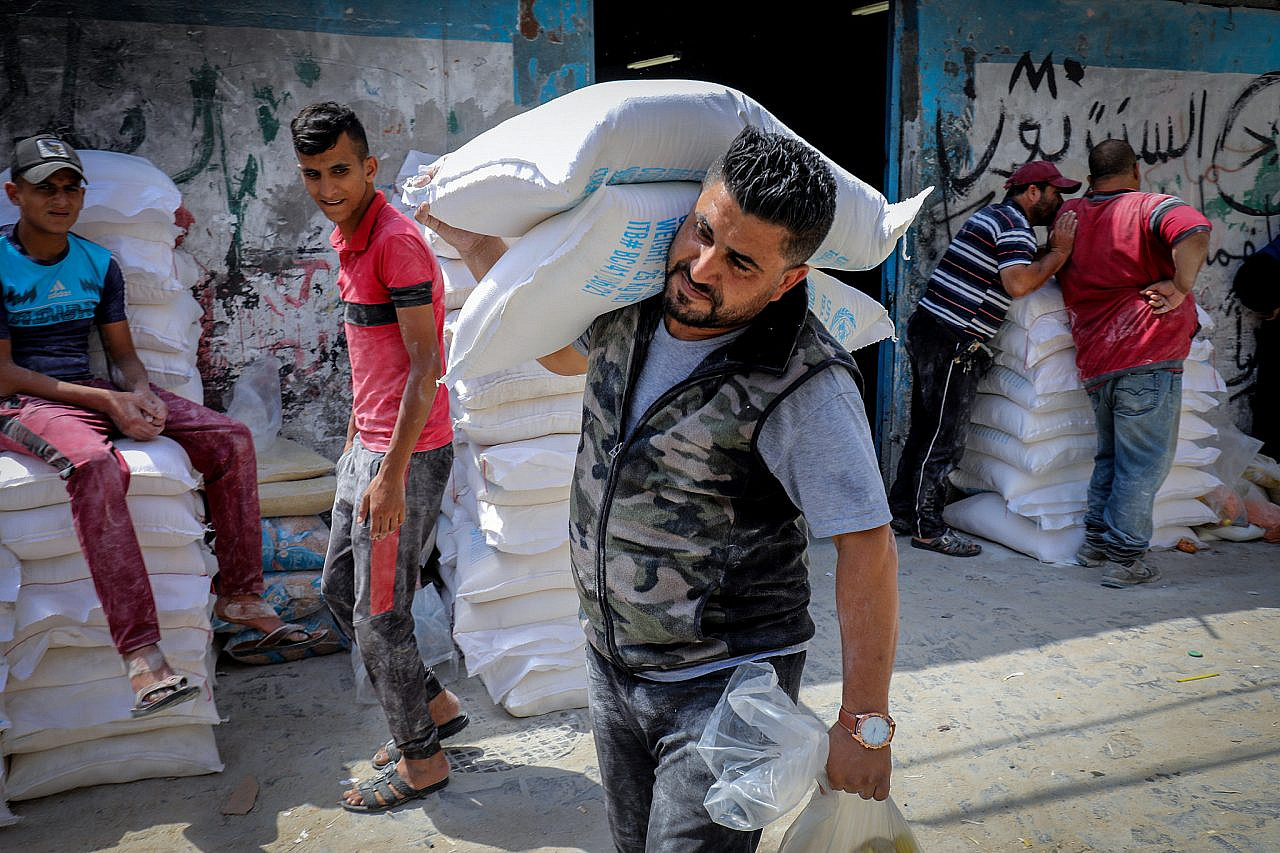
“We are doing everything we can to try and convince these donors to reconsider their decision, to encourage other [current] donors to increase their funding, and to bring in new donors,” Juliette Touma, UNRWA’s worldwide director of communications, told +972. When I asked her if the agency was considering scaling back its work in other places to help sustain its emergency relief in Gaza, she acknowledged it was “a fair question” and that “all options are on the table,” but remained hopeful the agency would secure enough funding to continue uninterrupted.
Even if donors can help make up some of the shortfall in UNRWA funding, it’s unclear how the agency can overcome the multiple bureaucratic hurdles being erected by the Israeli government. The state has refused to clear the right-wing protestors blocking aid through Karem Abu Salem, and Israel’s finance minister, Bezalel Smotrich, has instructed contractors at the Ashdod port not to deliver much-needed flour shipments to UNRWA. On Feb. 15, the Knesset followed with a bill to bar the agency from operating on Israel’s “sovereign territory.”
Making displacement permanent
With Netanyahu rejecting any Palestinian sovereignty over Gaza and no viable plans to assemble an international caretaker authority, Israel seems intent on assuming “security responsibility” over the Strip. Standing in its way are Hamas’ ongoing resistance and the presence of some 2.2 million civilians, 70 percent of whom fall under the care of UNRWA.
Pushing as many Palestinians as possible out of Gaza has long been a fantasy of Israeli politicians. Now, with roughly half of the Strip’s population backed against the Egyptian border and much of the remaining half threatened with starvation, Israel appears closer than ever to making good on that fantasy.
Forced displacement, however, is only one of Israel’s aims; making it permanent is the other. Established in 1949, UNRWA — which was initially “an instrument of explicit U.S. policy,” Takkenberg reminded me — has sustained five generations of Palestinian refugees, including in emergencies, according to the agency’s Registration and Eligibility Division. Since any Palestinians pushed into the Sinai would no longer reside within UNRWA’s area of operations, their right to return, Israel and its backers insist, would also become moot.
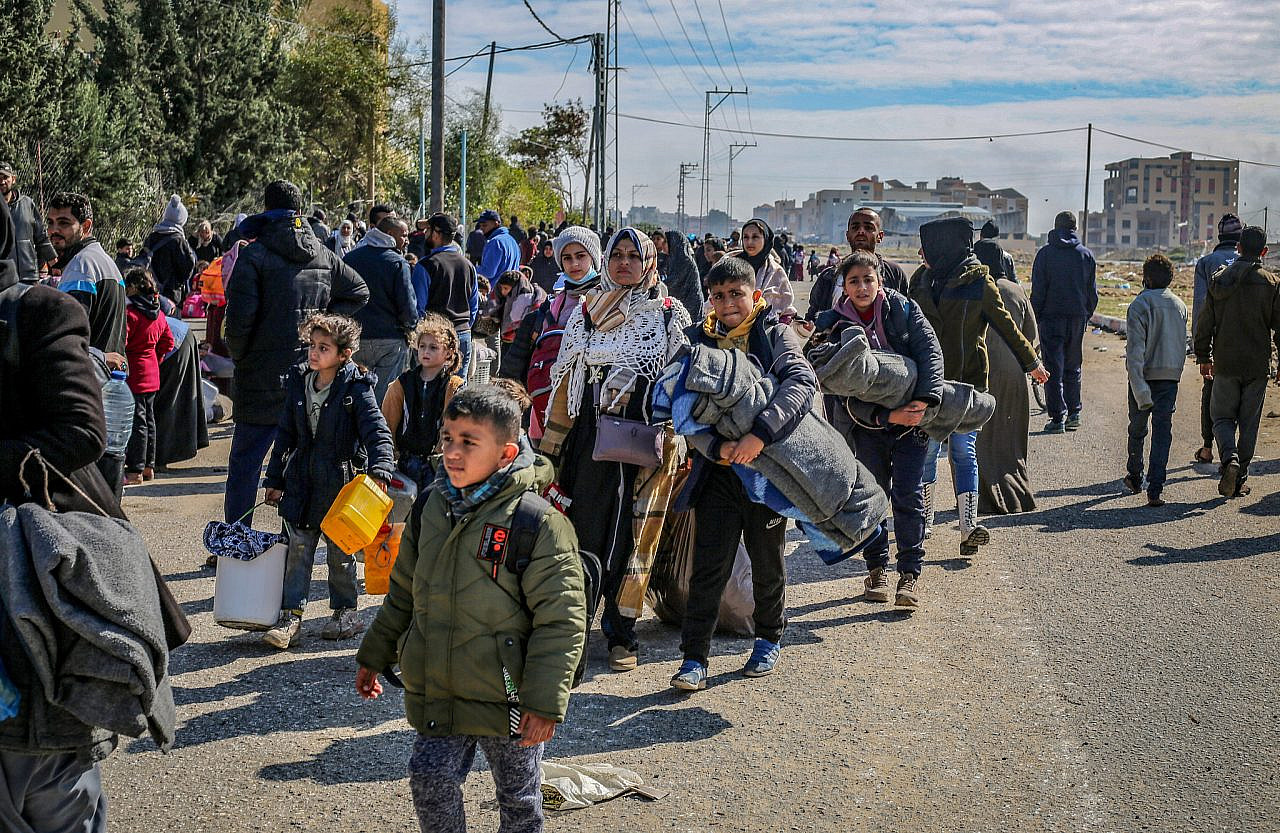
This argument is not true, according to Francesca Albanese, who, with Takkenberg, co-authored a 2020 book on Palestinian refugee rights and currently serves as the UN’s Special Rapporteur on the occupied Palestinian territories.
Writing for the Institute for Palestine Studies in 2018, just as the Trump administration had defunded UNRWA, Albanese pointed out that, even if Palestinian refugees were to fall under the purview of the UN High Commissioner for Refugees — as all non-Palestine refugees do — “the relevance of international norms and UN resolutions, such as Resolution 194, for Palestine refugees, would remain unchanged.” That resolution, passed in December 1948, affirms that Palestinian refugees who want to return to their lands “should be permitted to do so at the earliest practicable date.”
“Forcing UNRWA to cease operations or forcing Palestinian refugees into Egypt will not abolish the inalienable rights of the refugees to return, restitution, and compensation,” Takkenberg said. “Those rights flow from the illegality of the ethnic cleansing of Palestine, and they only become stronger with the passage of time and the further development of international law.”
Most read on +972
Meanwhile, as the so-called rules-based international order continues to fail Palestinians, crowdfunding sites like GoFundMe display page upon page of desperate pleas that speak to a different, more urgent truth: with nowhere left to run, the people of Gaza have had enough of Israel’s war and its bloody dividends. Above all, they want to live.
“We have endured so much hardship and uncertainty,” one woman, a 21-year-old dentistry student in Gaza, shares through the site. “We are desperately seeking a way to reach safety and provide a better life for our children.” Any donations, she adds, will cover “the fees required to cross the border into Egypt.”


